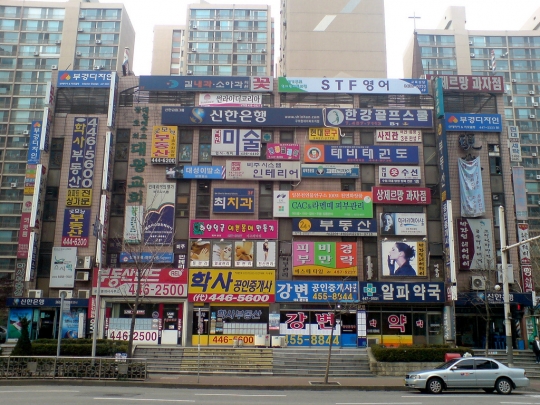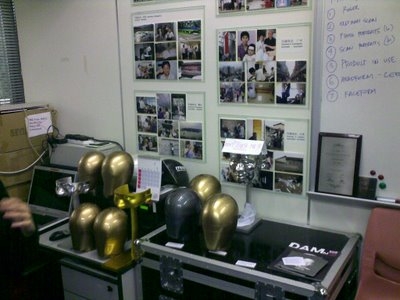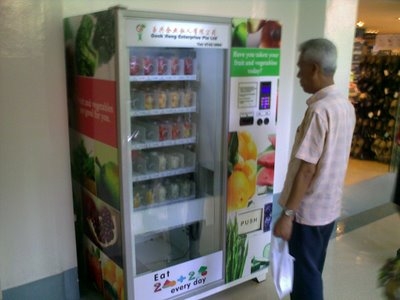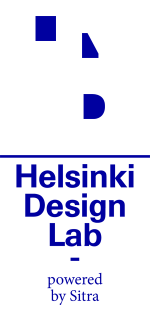All posts by Bryan Boyer
This week was a swirl of names: meeting new faces, lots of meetings all over Helsinki (and Lahti!), and the banal-but-critical task of naming a new project.
To start with the new additions to the team, I'd like to welcome Adriel, Ezra, and Justin to the project. Justin is a Sitra colleague who will now be devoting part of his time to HDL, and Adriel and Ezra are working with us as consultants. It has taken us a while to tweak the machinery here to be able to fold in new talent on a just-in-time basis, but now that infrastructure is set up and it's a huge help.
Adriel, Ezra, and Justin will take the lead on developing studio briefs for three studios that we are organizing for next summer in the lead-up to the main HDL event. The studios will each tackle a specific challenge here in Finland, but the problems are large issues relevant to many places. In other words, they're juicy problems. On the meta level we're looking at public service delivery, education, and a national approach to sustainability. Clearly these are vast topics, so within each one there will be a much more focused question or entry point, but we're still working to identify those. I'll leave it at that and let Adriel, Ezra, and Justin share more about their work once we collectively dig into the content a bit more.
It's an exciting moment because we're finally beginning to lock in dates, focus conversations on specific content, and clearly outline the challenges ahead of us (at least as best as we can see them). More later on these studios and their role as part of HDL, but for now it's enough to say that things are getting busy around here!
Internally we've been laboring to find the right name for a new part of HDL. This summer it became clear that a conference is probably not a strong enough vehicle to achieve our ambitions. Helsinki Design Lab needs to be an engine for fostering strategic design knowledge and capability. There are groups here and there devoting their thinking to strategic design and there are ongoing projects in various parts of the world demonstrating the value of having designers involved in sorting out systemic problems. In short, there's a good bit of chatter, but we want to see more. A conference that happens every two years is a good start but what else can we do?
We have lots of ideas... but I'll leave it at that for now and invite any suggestions you may have.
After spending a day with the product design experts and generally brilliant people at BERG London I’ve decided to borrow their habit of weekly reporting on the progress of the work at hand. Twenty nine weeks ago we officially kicked off the Helsinki Design Lab 2010 project and it feels like we’re now finally coming to a point of clarity. The many great conversations Marco and I’ve had with various people in London this week helped confirm that. Things feel right.
At the Royal College of Art Rama Gheerawo and Maja Kecman, friends of HDL, were kind enough to take time out of their busy schedule preparing for a celebration of the Helen Hamlyn Centre’s 10th anniversary showing 100 projects. Great to see so much work in one small place.
Geoff Mulgan and his team at the Young Foundation shared their work on formalizing knowledge about social innovation and, more generally, the need for design to adjust itself to the opportunities at hand. Specifically, that a focus on being able to back up our claims with evidence will help designers gain traction in conversations with political decision makers and that a stronger focus on the stewardship of implementation is required to deliver strong successes. Music to my ears.
The Methods work – online in the new year – was a collaboration with NESTA, who were kind enough to host us for a discussion about their work in The Lab (popular term). Kerry McCarthy rightly pointed out that one of the difficulties in lab/pilot/prototype work is achieving successful transferability, of new knowledge and methods, to a different context. To make a gross generalization, this seems like a challenge for design at large. As a community, we’re good at perpetuating fundamental things like the studio/critique model of design education, but could generally be better about knowledge transfer within the community.
Over at the Royal Society for the encouragement of Arts, Manufactures and Commerce (RSA), Matthew Taylor and Emily Campbell put forward a provocative idea: design is a tool for self reliance. Helping people think like designers gives them additional tools to solve their own problems, and assisting institutions to better understand the value of design helps eliminate those problems in the first place. How can design contribute to people achieving the future they want?
Some of those ideas came up at the Design Council as well, where Marianne Guldbrandsen hosted me for a long conversation about many things, including how the Council has been devoting more attention to design as a tool for understanding through ethnography and field research. By influencing design policy, developing new skills and education capability within the UK design community, and sponsoring demonstration projects that make the case for the value of design, the Council is up to many interesting things.
Tom Loosemore of 4IP was kind enough to let Marco and I pick his brain on the challenges of funding socially beneficial projects from a venture capital perspective. 4IP’s investments in new media represent a really exciting expansion of the notion of media, public service, and business opportunity. Tom’s insistence that the challenge of running a business is a useful test for any good idea was a nice wake up call. At the end of the day, everything we do should generate value in some way, right?
The question of value continued as a thread in my discussion with Inderpaul Johar of Architecture00 too. Inderpaul is the rare sort who can speak fluently about architecture and finance and policy in an incredibly thoughtful and articulate way. One big question that came out of our chat was the nature of design education today: what’s missing? Indy has a lot of ideas.
As an architect myself, it’s nice to see the architecture scene in London active in this discussion. Sarah Ichioka, who has been running the Architecture Foundation for about a year now, is fostering a larger discussion about reshaping spatial practice. I was disappointed to have missed Paul Nakazawa’s lecture at the AF, but not surprised in the slightest that he’s part of the conversation here. Paul’s experience consulting architecture offices around the world about the business challenges of running their practices, about the changing role of the architect, and about the intricacies of practice in an international context is a true resource.
At the end of this busy week, weary from waking up a little too early to be on a conference call with our legal team, I’m taking a bit of time to relax with a coffee at the stylish Modern Pantry in St. John’s Square. My brain will be crunching through these many great conversations for weeks to come but for now I’m heading back to Helsinki. Till next time, London!
Interviewed in the Architect's Newspaper yesterday, celebrated British architect David Adjaye responds candidly to some very direct questions about the financial troubles that his practice has faced, and is now recovering from. This is worth pointing out for two reasons.
It's great that he's willing to admit that things were difficult! So often in the design professions we do everything we can to keep a clean portfolio, a straight face, and an air of effortless accomplishment. But practitioners do fall down, they do make mistakes, and they do occasionally suffer because of it. The question is how you learn and recover from those challenges (and sometimes failures too). The more designers are actively sharing their experiences of both success and failure, the more we can collectively figure out ways to gracefully overcome challenges.
Secondly, it's great to see Adjaye reflecting on his own experience setting up his practice as a studio and a business. The world has changed a lot since the studio model of design education was developed in the 19th century: what should we do to bridge that gap? I'll let Adjaye address this question:
Schools are woefully unconnected to the idea of the profession being entrepreneurial. We were all graduating and trying to get into employment right away. This generation is very different, because they’re paying off their debts. In my day in London, it was still very much in the grant system. Your education wasn’t a noose around your neck in terms of repayment. It was almost like free, and you were very ready to take on the world and come into the world. There was more risk-taking.
It's always a little sad to come across a blog that has gone fallow. Sorry, world, but we hope to do a better job of posting regularly in the future.
In truth, it's hard for me to accept that it was five months ago that I was in Los Angeles giving the first sneak peak into what HDL 2010 will be. In the intervening months Marco and I have been spending a lot of time hashing out both the ambitions for HDL and seeking a reasonable way to see it through. Part of this process has been looking for examples of projects that are demonstrating the efficacy of strategic design tackling complex problems. Have any favorites? Leave us a comment below if you do!
While we've been quietly developing HDL, Sitra has been more visibly at work organizing Low2No: A Sustainable Development Competition centered around an urban block and HQ building in Jätkäsaari. With the centralization of Helsinki's ports to single new site, six separate logistical areas are being vacated. The competition site, Jätkäsaari, offers about a square kilometer of new land adjacent to central Helsinki for development. In other words, it's a fantastic opportunity that cities as established as Helsinki rarely find. But with this opportunity comes a challenge: to use existing models of development will ensure that our current out-of-balance lifestyle continues--massive resource consumption and carbon output. Can the design of one block be used as a catalyst to design and demonstrate new approaches to development that are not only sustainable but restorative and replicable?
From a competitive pool of 74 replies to our Request For Qualifications five teams were selected to develop proposals:
- ARUP – Sauerbruch Hutton – Experientia – Galley Eco Capital
- Bjarke Ingels Group, BIG – Vahanen – ARUP Foresight Innovation – Transsolar Energietechnik – Anttinen Oiva Arkkitehdit AoA – Masu Planning – Passiivitalo.fi – Pasi Mäenpää – Mikko Jalas
- Peter Rose & Partners – Michael Van Valkenburgh Associates – Guy Nordenson and Associates – Matthias Schuler, Transsolar Climate Engineering – Mobility in Chain – ARO Architectural Research Office
- REX/Croxton Collaborative/NOW – Transsolar Energietechnik – Magnusson Klemencic Associates – Bureau Bas Smets – 2x4 – Arup New York – Front – Jonathan Rose Companies
- WSP Group – Heatherwick Studios – B&M Architects – JK MM Architects – Space Syntax – Helsinki University – AA Palmberg Ltd – Pekka Himanen – Pauli Aalto-Setälä
By now the teams have completed their proposals and the winner will be announced on September 1st. If you live in Finland or happen to be in Helsinki on the first, please join us for the announcement cocktail hour and a chance to chat with the teams. You can find the practical details of the event here.
There are few places that could serve as a better platform for a discussion about architecture and the city than the roof of a skyscraper, smack in the center of Los Angeles. Last week Postopolis! LA convened a group of more than 40+ speakers for five days of near-constant conversation. I was pleased to be able to participate by sharing the story of Helsinki Design Lab 1968, a bit about where we're going with HDL 2010, and to introduce the Low2No competition that Sitra recently launched.

Photo from Storefront for Art & Architecture on Flickr.
It was great to see some old friends and meet many new ones, but I particularly want to highlight the way that Postopolis! LA came to be. On this blog we've been describing different kinds of innovation, and Postopolis! is no exception. Unlike most events which have a central organizer, Postopolis! was hosted by six bloggers from five different cities, all enabled and made fluid through online collaboration tools. Think about that for a minute. The images and ideas from Eric Rodenbeck's presentation about data visualization, Benjamin Ball's design by process, and Ben Cerveny's thought-wander through the territory of the city as operating system will be playing on repeat in my head for a long while, but the quiet triumph of Postopolis! LA was its own formatting – the very nature of the event as a unique collaboration might just be the most impressive part of all. (This may mean we have too much event-planning on the brain...)
Now that we're all back to Helsinki to rest up and let these experiences soak in, this blog will probably be a bit slow for a while. In the mean time, you can browse the Twitter stream from Postopolis for extensive notes, excerpts, and the occasional dérive.
Is political protest a relic of the 20th century? In a way, this is the question that The Hope Institute asks here in Seoul. As a non-profit that runs a number of different advocacy and education programs, the Hope Institute proposes that "social invention" can replace protest as an effective tool for improving the quality of daily life. Over the past two years they've collected more than 16,000 ideas and are actively prototyping some of them.
In some of their most interesting work the Hope Institute uses crowdsourcing to collect ideas that can improve various aspects of living in Korea, from tweaks to the Metro system to alternate farming practices. After collecting advice from the people on the ground, Hope Institute brings together various stakeholders (be they government, business, or other communities) to join in one conversation about the problem at hand and then prototypes solutions and publishes their findings.

Photo from Arne Hendriks on Flickr.
One ambitious project they're working on is to change the visual experience of Korea's busy streets. With little regulation applying to the way that signs and advertisements are applied to building facades, the streets can quickly become a cacophony of sales pitches. Hope Institute's "Sign is Design" program hosts the municipal offices in charge of signage, the sign owners, and the sign designers in a single conversation so that all parties can work together to find a more orderly and pleasing way to deal with signage. Recently they adopted one of the rundown streets in Busan's old city center and applied their process to redo the all of the signs. If this were all for the sake of a more beautiful street we could note its improvement briefly, but post-renovation shop owners have noted that foot traffic and sales are both up. This increase in business is the direct outcome of good design being applied to a problem at all levels, from the strategy of bringing together all the stakeholders down to the graphic design of the individual signs.
If you speak Korean you may enjoy watching this presentation by Hong Ilpyo from LIFT ASIA '08, Research Fellow at the Hope Institute, where he talks about more of Hope Institute's work. The Q&A is in English and starts about 15 minutes in.
From the top of the ArcoTower in Anyang, a town in the southern reaches of the Seoul metropolitan area, it was quite clear what happens when a functionalist approach is taken to urban design: you get a city comprised of rubber stamp blocks, each the result of some generic equation optimized for things like "habitation units" and traffic flows. Top down planning can be quite efficient and was an important tool in South Korea's rapid urbanization in the latter half of the 20th century, but while growth rates may change quickly, concrete stays put much longer. In other words, buildings and cities planned with only the near future in mind may be immediate successes, but can quickly morph into liabilities when looked at over the span of multiple generations.

Photo: Anyang, South Korea photographed by Yong27 on Flickr.
Mr. Ohn Yeong-Te, President of the Architectue & Urban Research Institute (AURI), crystalized the problem that architects face when trying to improve the quality of the built environment by stating that designers are responsible to three parties: the people who live their daily lives in and around buildings, the businesses which rely on the smooth function of the city and its structures to ply their trade, and broader society which deserves high quality architecture that may become "tomorrow's cultural heritage." These different levels of responsibility relate to various strata of decision making from the grass roots all the way up to national policy. Without a perspective that incorporates design input at all levels of decision making it's very difficult to deliver high quality buildings.
This eloquent description of a need for planning that is integrated and informed from top to bottom was further expanded upon by Cho Sang-Kyu, Manager of AURI's Architecture and Urban Information Center, who described the need for architects to collaborate horizontally across disciplines. As society puts increasing demands on our buildings (it must be green! it should sustain itself financially!) the architect finds that they must work directly with other disciplines to deliver the informed perspective that is required of them.
Although AURI's work is at the national level (they report to the Parliament of South Korea), Anyang was the perfect place for this discussion about the potential of design-informed decision to result in high quality spaces. With iniatives like the Anyang Public Art Project, the city itself is actively looking for solutions to the rubber-stamp urbanism they've inheretied from the mass-production past.
Later in the day, a visit to the buzzing offices of Cho Minsuk, Principal of Mass Studies, provided some context to the discussion at AURI. Where are the precedents for this kind of integrated thinking amongst the community of designers? I'll sign off now with this as an open question to you: Which architects and designers are finding clever ways to insert themselves into these larger questions? Who do you look to for role models in this area?
On our last day of meetings in Bangalore, we had the pleasure to visit Srishti School of Art, Design, and Technology where Geetha Narayanan shared with us a bit of the history of her ground-breaking school and some of the opportunities and challenges facing educators working in India today. Geetha and her team have built a wonderful momentum within their school which has grown from an inaugural class of one single student in 1996 to an enrollment of over 250 today.
A theme that comes up again and again as we visit educators in different countries is the need for designers to be better trained to operate outside the bubble of art and design. It was great to hear Geetha flesh out the term "design education" beyond the training of designers to include something akin to the concept of the embedded designer I described previously. With the collaborative, studio-style approach gaining popularity in all levels of education from primary up through grad school, it's exciting to note that these students are learning new ways to think about and see the world in addition to the content of their various subjects.
To imagine that a pedagogy which uses design to helps students better understand the world could be taking root in one of the planet's most populous countries is an exciting proposition indeed. Being here for a few days has given us time to get only the smallest peek into life in India, but it was enough time to clarify how great the opportunities are for even the smallest of innovations in a place as vast, populous, and talent-filled as this.
Today we stopped by The Hong Kong Polytechnic University School of Design to see for ourselves how design education is being thought of in this part of the world. Dean Lorraine Justice along with Professor Martin Smith (both at HDL 2008) talked about the need to educate designers as teachers. Many trained designers find themselves teaching studio at one point or another, but what training do we have to write curriculum or even shape well-crafted exercises? Naturally one is armed with the implicit techniques and ideas that they pick up through their own schooling, but teaching is its own art and teaching design is particularly special. To address this issue HKPU will be offering a new Masters of Design (Design Education) in the fall, along with new degrees in Design Strategies, Design Practices, and Interaction Design.

There are too many things to mention, but while taking a tour of HPKU with Babbette Strousse (HDL 2008) we quickly got to see a unique research project. Size China's proposition is simple: all product designers use human factors information at some point. Why rely on the same old Measure of Man and Woman when different ethic backgrounds, ages, and body types each have their own physical characteristics?
Researchers here have scanned upwards of 2000 people from six major regions of China to produce a sort of virtual reference model for Chinese head types. Captured with a 3D scanner, these data points may be aggregated and averaged to produce a more accurate reference point for the design of bodily products. Companies spend millions of dollars on segmenting their customers into target markets, why not apply this same intelligence to the design of physical objects and provide local or regional solutions to global problems?
Today Marco and I zipped around Singapore under the able guidance of Cecilia Chua of The Idea Factory (thanks, Cecilia!). In three separate cases we met with people who are working to bring the process of design to deep problems in three different contexts: national policy, patient care, and primary education.
How many countries have a government office for design? We visited Dr. Milton Tan who runs the DesignSingapore Council to learn more about the sorts of initiatives they are working on at the Ministry of Information, Communication, and The Arts and to get a glimpse into how design is promoted inside Singapore. The popular industrial design congress, ICSID, will be held in Singapore this year and DesignSingapore Council has some interesting ideas already cooking.

Fruit vending machine in the halls of Alexandra Hospital
From top down to bottom up, we left Design Singapore and headed directly to Alexandra Hospital where CEO Liak Teng Lit is radically re-thinking hospitalness. A serious convert to The Toyota Way, Liak is committed to considering every tiny detail of the hospital as a patient experience. In the course of our brief time with him, Liak was refering to botany, hotel design, airplane seats, call centers, and more... all as models of thinking about his problems in the hospital. His tweaking of the hospital ranges from wayfinding that makes it easier for families to identify who is caring to their loved ones, to new pricing models for the cafeteria that encourages healthier eating (vegetables: $.20; meat: $1). What's more, Liak is a numbers guy so he's backing up these micro innovations with statistics that underscore their impact.
Cecilia really planned a busy day for us, so after leaving the hospital we stopped briefly at Pasir Ris Primary School where the students were working with their teachers on a "co-design" exercise. Essentially, this was a sort of curated crowd-sourcing where the students were asked to generate ideas around a given topic while the teachers acted as facilitators. This is not such an unfamiliar story, but this particular school has a track record of producing new ideas and even products in house and successfully exporting them to other schools in Singapore. Twelve year old students conceptualizing, writing, and illustrating books that are now in active use at other schools? Sounds like a success story to me.
Tomorrow: Hong Kong!
In the past few years, groups of people without a direct connection to the practice of design have grown increasingly fond of the word. Business Week even ranked Harvard as one of the top design design schools in the country. Not the Graduate School of Design as you may expect but HBS, Harvard Business School. Huh?!?!
Referred to by some as "Design Thinking," or more broadly as "innovation," this is a way to describe the synthetic, visual, and iterative approach to problem solving that any practicing designer has drilled into their skull during their professional training. If this way of thinking is gaining currency among non-designers, that’s because it is truly useful for any number of situations beyond the design of beautiful widgets and functional gizmos.
The converse is also important: if on the one hand the design community lends a hint of its thought process to newcomers in the form of "design thinking," then designers must also seek opportunities to take root within unfamiliar organizations and situations. You could call this the "embedded designer," one who brings the full mélange of visualization, problem solving, and prototyping expertise to bear on problems of process, strategy, and decision making from deep within a host organization.
It should be no surprise that this notion of the "embedded designer" appeals to me since it more or less describes the job I've been asked to perform here at Sitra. As a Design Lead in the Strategic Design Unit I lend the eye (and brain!) of a designer to a range of in-house issues, from refreshing our branding to the more nebulous question of how we foster a strong relationship with designers worldwide.
With the professional training of an architect and a previous background in software design and development, my experience runs the gamut from the shaping of physical objects to the design of abstract interactions. The ability to touch many points along this spectrum is part of what excites me about working at Sitra.
As our plans for HDL 2010 develop I look forward to further articulating the potentials of the "embedded designer" as a way of bringing the important skills and ethos of the design community to questions of decision making in business and government. As Marco has already mentioned, "design" seems to mean something different to each person who utters it. To rescue the term from a slow death as jargon we need to find ways for the design community to engage outsiders while championing our expertise as something deep and specific – design is broader than what you can pick up during a few courses in an MBA program. Thinking like a designer is certainly useful, but the great value proposition of design has always been in the nexus of thinking and doing. If we're successful, this is the spirit that HDL 2010 will foster.
As a first step towards shaping HDL 2010 we have been spending a lot of time in the archives. Not only is there a wealth of content from 2008 (view some of the videos if you need a reminder) but quite a bit as well from a 1968 precursor to HDL. Indeed, the cultural and design milieu of 1968 was surprisingly similar to our own. Then, as now, designers were striving to locate themselves amongst business people, politicians, and other professionals in an attempt to work out more effective ways of addressing the significant problems of the day.
Check out some of the archival materials we've posted to find a little inspiration. I would also like to suggest that you add this site to your feed reader so that you're notified when we update the site. It's going to be an exciting year of planning and preparation - more soon!




